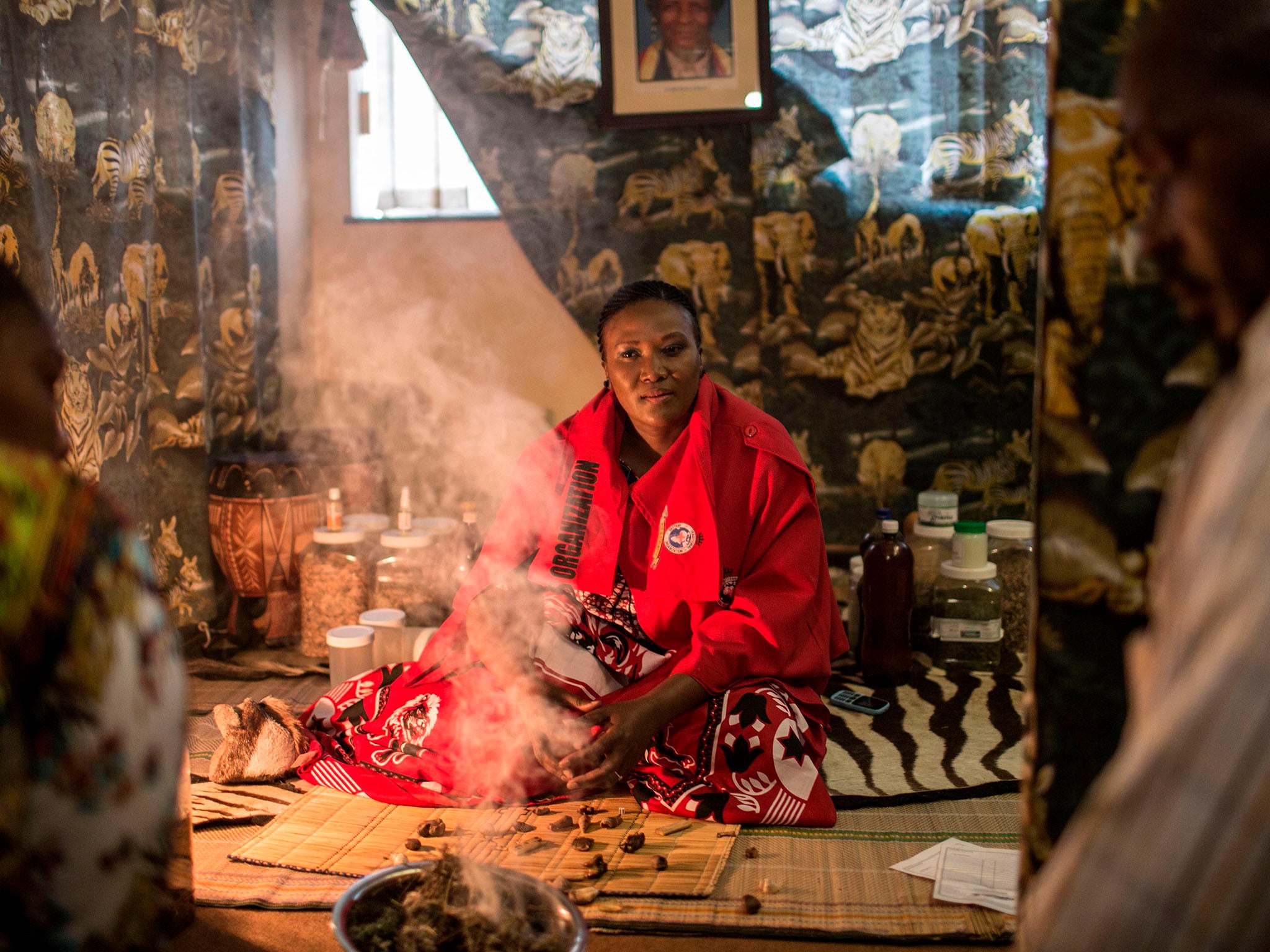African Healers Treating Ebola
"Let it [Ebola] stay in Congo. We seldom see Congo people here. Let it not come."
"In that state [hallucinogenic trance resulting from seeds he feeds his patients], they say many things."
"And I can tell from their words whether it is demons or a curse making them ill, and I can decide how to treat them."
Samuel Muriisa, 74, traditional healer, Lake Bunyonyi, Uganda
 |
Traditional healer Gogo Phephisile Maseko attends to patients using a blend of cannabis and other herbs in Johannesburg
AFP/Getty
|
They helped to wash her body. A body unbeknownst to them, thriving with virus.
And when they subsequently returned to homes in Guinea and Liberia the worst Ebola epidemic in history was ignited. According to the World Health Organization about 80 times as many traditional healers are present across the continent of Africa, as are medical doctors present to use modern medicine in the treatment of illness and disease. It is traditional for Africans to consult their healers. And millions of Africans do just that.
Congo is now facing an Ebola outbreak with doctors fighting the disease as best they can among patients that become infected while in the process of visiting their traditional healers. When they arrive to see their faith healers it is usually because they are ill with a cough or malaria or minor health problem. But in the course of being treated, they lie next to someone afflicted with Ebola, not yet diagnosed. And they become infected, themselves.
Mr. Muriisa is the most highly respected omushaho wekishaka -- traditional healer -- in the area of Uganda bordering the Democratic Republic of Congo. He understands the disease is raging a mere 30 kilometres distant. But one of his wives whom he utilizes as his triage nurse claims she can recognize anyone with bleeding eye sockets or fingernail beds, known, she heard as the chief symptoms of Ebola. What she obviously does not know is that most victims of Ebola never hemorrhage, and for those who do, bleeding represents a late-stage symptom.
In his office, a thatched mud hut located at the top of a steep hill over a boat landing, he wears a cloak of serval cat fur and a black-and-white monkey hair headpiece, the symbols of his office as a medical practitioner. Lake Bunyonyi lies at an altitude of 2,000 meters, crowded with farmers, crawfish-gatherers and lakeside resorts. Africans travel long distances to visit healers in their home villages, trusting the healers who spend time with their patients, speaking homey dialects.
Payment of vegetables, alcohol, chicken and goats for medical services are negotiable, as the currency of value recognized by the indigent and by their healers. Trust is also placed in herbalists who dispense teas, ointments and powders proven to alleviate simple and common conditions like allergies, nosebleeds, arthritic pain or toothaches. Potions to ward off lightning strikes or jealous neighbours are also available.
While Mr. Murissa agrees he cannot cure cancer, he does treat snake bites successfully. And the treatment of mental illness begins by the patient imbibing hallucinogenic seeds from a shrub, to enable the good doctor to determine whether he must treat demons or a curse, after interpreting the patient's stream of consciousness emissions.
Labels: Afflictions, Africa, Disease, Doctors, Faith, Healers

<< Home